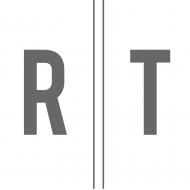
I first read Into the Wild as a teenager. I was working at a Christian bookstore at the time, selling copies of Left Behind and The Prayer of Jabez in a shopping center off the highway. On breaks I would walk across parking lots and past chain restaurants to the Barnes & Noble to read John Krakauer’s account of Christopher McCandless.
McCandless was a young man with a deep longing for the wilderness and an acute awareness that civilized society could not answer that longing. After graduating college, he gave his money away to charity, cut off ties with his family, changed his name, and walked into the mountains of Alaska.
There was something thrilling about living vicariously through McCandless. My view may have been dominated by parking lots and overpasses, but he was immersed in, “nature in its most staggering grandeur.” What’s more, McCandless took his longing seriously. He refused to be content in anything less than a radical existence.
McCandless was a kind of secular saint of longing. He held nothing back, but gave himself over entirely to the object of his desire. He was also a martyr. His body was found by a hunter just a few months after he entered the Alaskan wilderness.
His story, sad as it was, articulated something that I hadn’t found in the shelves of the Christian bookstore. It spoke of human longing, and of the ways in which those longings make us wild.
